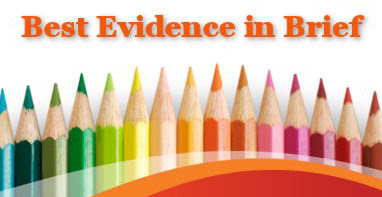Reading comprehension is an essential skill, hence, it is crucial to identify effective strategies to support children in developing this skill, particularly when they face challenges in reading. In a recent Bayesian network meta-analysis (BNMA), researchers examined the effectiveness of various combinations of text comprehension strategies in interventions for students with reading difficulties across grades 3 to 12.
The meta-analysis included 52 studies and focused on commonly-used strategies including main idea, text structure, retell, self-monitoring, graphic organizers, inference, and prediction. Among the 35 possible combinations of strategies examined, the meta-analysis found the main idea-text structure-retell combination to be the most effective in improving reading comprehension (Standard Mean Difference = 1.72). Close behind was the main idea-text structure-self monitoring-graphic organizers combination (SMD = 1.13), followed by the main idea strategy alone (SMD = 1.07). These combinations and individual strategies showed a significant positive impact on enhancing reading comprehension skills. On the contrary, the least effective combinations were inference-text structure (SMD = -0.61), retell-graphic organizers (SMD = -0.03), and main idea-inference-text structure-prediction-self monitoring (SMD = 0.05), with negative or minimal effects on improving reading comprehension. In addition to strategy effectiveness, the study highlighted the moderator effect of background knowledge instruction, which significantly enhanced the overall effects of the strategies. It emphasized the importance of considering background knowledge instruction to reduce cognitive load and facilitate knowledge retrieval when implementing reading comprehension strategies. Overall, these findings challenge the notion of a single most important strategy and emphasize the interaction and combination of different strategies.

